
views
- Find thousands of unique fonts at popular sites like dafont, Google Fonts, and Font Squirrel.
- Download the font of your choice and extract the font file within the ZIP folder. It typically uses a file extension like .ttf, .ttc, or .otf.
- Place the font file in C:\Windows\Fonts.
Using Windows 7 and 8
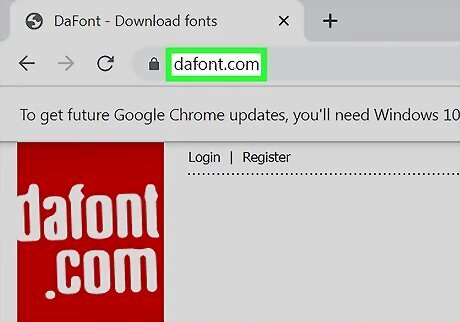
Find some fonts. You can find fonts for purchase or for free at various sites online. There are numerous sites that offer free, open-source fonts that don't require any registration or extra programs. Some of the more popular sites include, dafont, Google Fonts, Font Squirrel, 1001 Fonts, and fonts.com
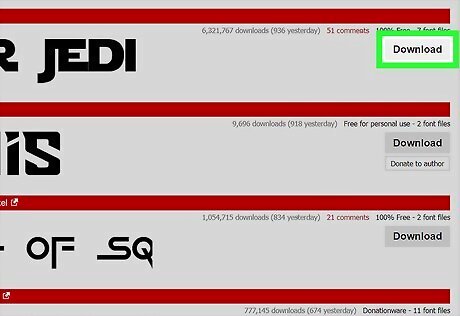
Download the font of your choice. Make sure to download from a reputable location, as font files are a classic virus-prone file. Most fonts will be downloaded in a ZIP format. Save the file somewhere on your computer that will be easy to find, such as the desktop.

Extract the font file. The ZIP file should contain a single font file that can be installed on your computer. Typical file formats include .ttf, .ttc, and .otf.
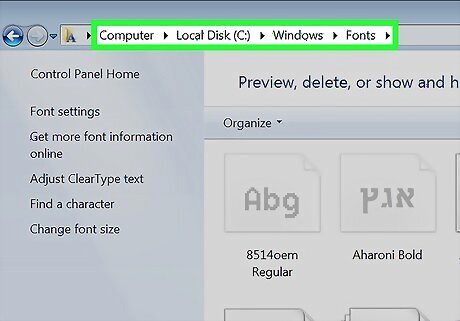
Open C:\Windows\Fonts. Using Windows Explorer, navigate to the Fonts folder in the Windows folder on your hard drive. You should see a list of files for your already-installed fonts.
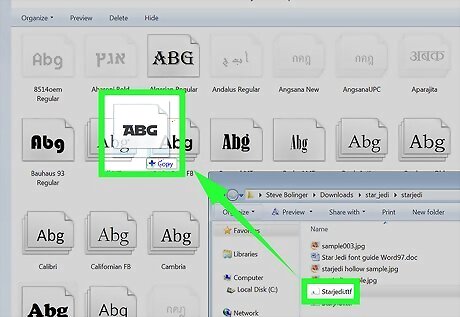
Drag the new font file into the Fonts folder. Dragging and dropping the font file into the Font folder will automatically install the font. It will be available when you next access your fonts in a program. You can also install fonts by double-clicking on the font file. The font installation wizard will start automatically.
Installing Fonts on Windows XP and Vista
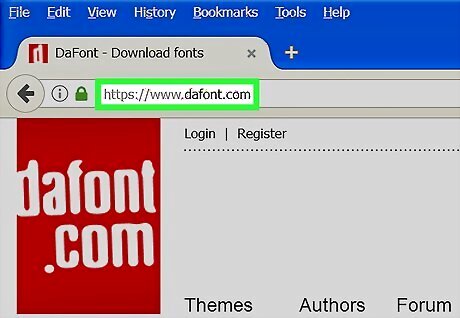
Find a font file online that is compatible with your version of Windows. Verify the file to ensure that you will not download a virus that is harmful to your computer. Make sure you download it from a trusted source with a number of user-generated reviews.
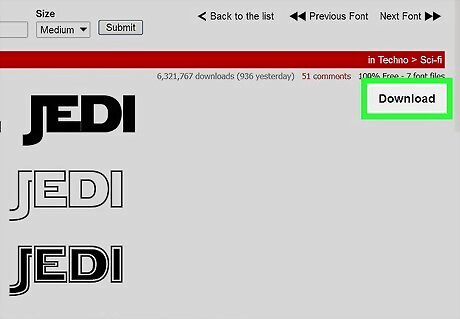
Click "Download" to save the file to your computer. Oftentimes fonts will download in a ZIP file, which will need to be extracted after downloading. You can do this by simply double-clicking the ZIP file and then dragging the font file to another location on your computer, such as your desktop.
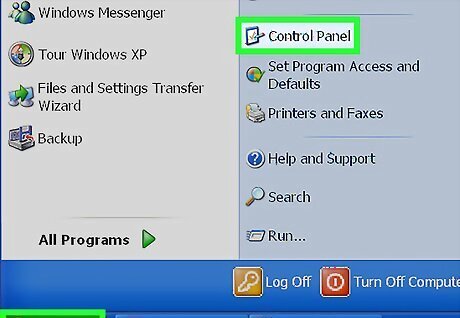
Open the Control Panel. Click Start and then click Control Panel. This menu allows you to adjust the settings for your computer.
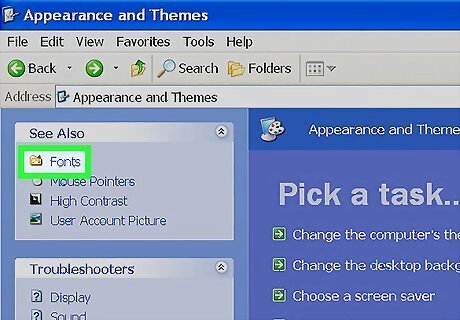
Open the Fonts menu. Click on Appearance and Personalization in your Control Panel, and then open the Fonts option.
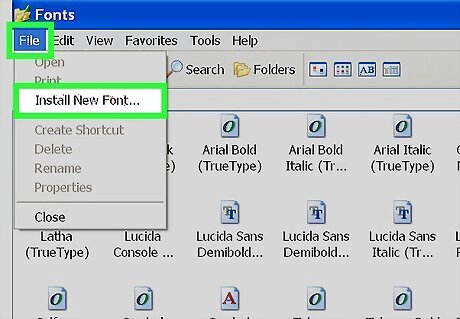
Click the File menu. If the File menu is not visible, press the Alt key to make it appear. Select "Install New Font" from the drop down menu. A Fonts dialog box should pop up to help you navigate through installation.
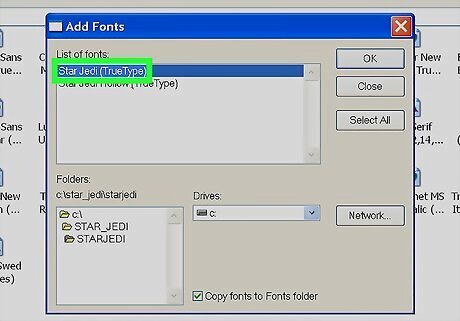
Choose the location of the newly downloaded font file. Make sure that the file has been unpacked if it was in ZIP format, otherwise it will not show up in the list of files.
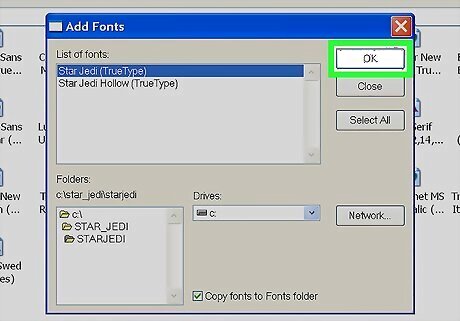
Choose "Install" once the proper file is selected. Follow the prompts from the installation wizard. You should be able to access your font the next time you open your program. If you have problems accessing your font, try restarting your computer.
Install Fonts on Mac OS
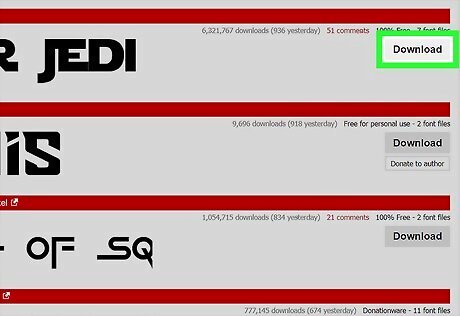
Download the font of your choice. Make sure to download from a reputable location, as font files are a classic virus-prone file. Save the file somewhere on your computer that will be easy to find, such as the desktop.

Expand or extract the file. To expand a .zip file, you simply have to double click on it. A .rar file will require an expander application, such as 7Zip or Winrar.
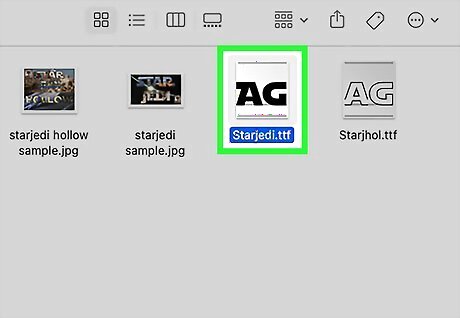
Double-click on the font file. This will open the Font Book where you can preview the font. You can also open the Font Book manually from the Applications folder. You can use the menu at the top of the window to see how the font will appear with various style changes, such as bold or italic.
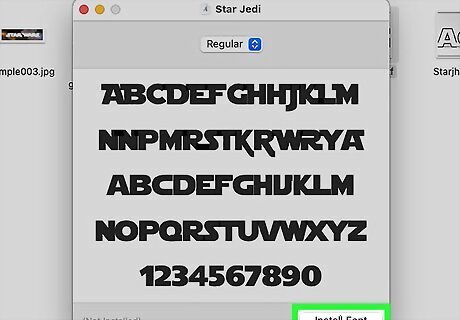
Click Install Font. This will add it to your font list in documents and other programs. You can also install fonts by opening the Font Book, clicking File, and then selecting Add Font. You can then browse for the font file on your computer.
Installing Fonts on Ubuntu

Find a font you like from a reputable source. The usual file extensions you will see be more or less the same for Windows if you're installing TrueType (.ttf) or OpenType (.otf) fonts. Extract the fonts if they're zipped in an archive file.
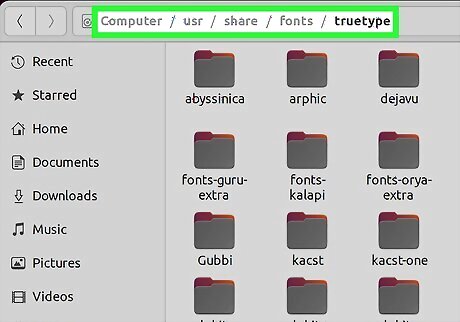
Copy to /usr/share/fonts/truetype. Use your file manager (typically Nautilus) with elevated privileges to do so, otherwise you won't be able to copy them there because of file/directory permissions.
Alternatively, if you're handy with the Terminal, you can use sudo cp


















Comments
0 comment